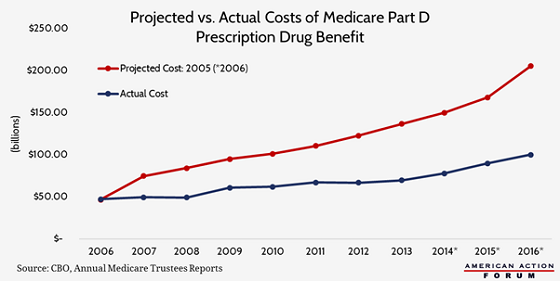Weekly Checkup
March 9, 2018
The Single-Payer Conundrum
Today the American Action Forum is releasing the results of a nationwide and battleground-region survey of the electorate’s opinions on a variety of issues related to the health insurance market. You can find the results and wider-ranging analysis here, but one area worth highlighting is voters’ reaction to a single-payer health care system. Many on the left have been clamoring for such a system for some time. Our results show that voters oppose a single-payer system 51 percent to 41 percent, but the difference in enthusiasm is marked: Only 28 percent of voters strongly favor a single-payer system, while 43 percent strongly oppose it.
As one would expect, Democrats are more likely to support a single-payer proposal—with 66 percent endorsing the concept—while 78 percent of Republicans say they oppose it. The more interesting data point, and one that presents supporters of single-payer with a conundrum heading into the November elections, is that 55 percent of independents oppose single-payer while only 39 percent support the concept. Advocating for single-payer health care as an abstract concept might play well in Democratic primaries, but it could backfire with crucial independent voters in November.
Even more problematic from a pro-single-payer perspective is that 45 percent of Democrats and 63 percent of independents are less likely to support the proposal when told it could cost as much as $3 trillion a year. Perhaps, that’s why advocates have largely avoided discussions about cost or how they would pay for a single-payer system. But the most significant finding is that 51 percent of Democrats and 64 percent of independents say they would be less likely to support single-payer if it meant the end of employer- and union-provided insurance, which—by definition—it would.
The left clearly has a surface-level electoral advantage in advocating for single-payer health care, but the reality is much less sanguine than advocates might suggest.
Chart Review
Tara O’Neill Hayes, Deputy Director of Health Care Policy
In 2016, Medicare Part D expenditures were $100 billion, or less than half of the $205.5 billion cost projected by the Congressional Budget Office in 2006. In the first 10years of the Part D program, total expenditures were $555.8 billion less than originally projected. The success of Part D can be largely attributed to its private-sector model which leverages competition and innovation to reduce beneficiaries’ drug costs and improve their overall health. –from “Medicare Part D: Advancing Patient Health Through Private Sector Innovation“
New from Team Health at AAF
New AAF Health Care Survey
The American Action Forum today released a new survey of likely voters on a range of health care issues, including support for single payer, cost-sharing reduction payments, reinsurance, and impressions of health care quality.
Worth a Look
Center for Health and Economy: Health and Economy Baseline Estimates
Axios: New GOP push: Bill That Would Split Individual Market
Wall Street Journal: After Addiction Comes Families’ Second Blow: The Crushing Cost of Rehab











